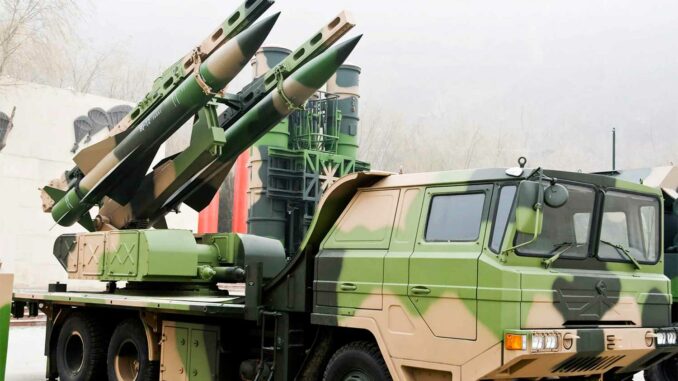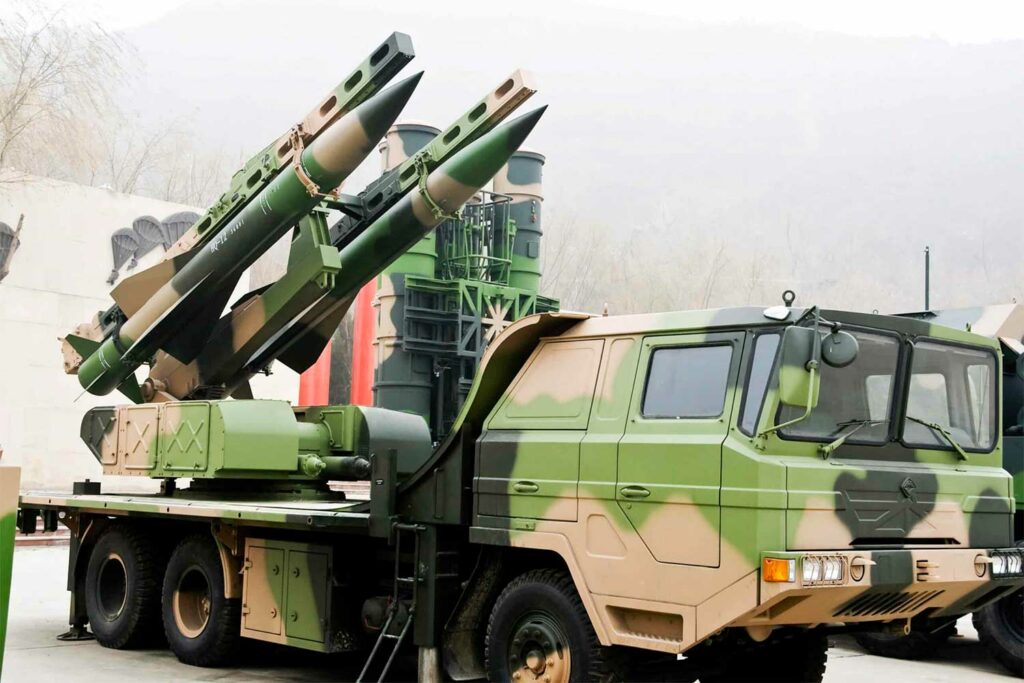
Comprehensive analysis of Iran’s acquisition of Chinese HQ-9B systems to restore its defenses after Israeli strikes, challenges, and how they work.
After twelve days of Israeli strikes in the spring of 2025, Iran’s air defenses suffered critical damage. Its Russian S-300 batteries, acquired in 2016, were largely neutralized. In response, Iran received HQ-9B batteries, Chinese long-range anti-aircraft systems, in early July. Paid for in oil, these deliveries are intended to restore a depleted capacity. This strategy combines an urgent need for territorial coverage, cooperation necessitated by Western sanctions, and a clear geopolitical gamble: turning to Beijing to fill a critical void.
The operational context after the Israeli strikes
Between June and July 2025, Israel conducted a targeted campaign against Iranian defense installations, radars, command centers, and S-300 batteries. The strikes left Iran vulnerable in the medium and long range. Ensuring protection against future attacks became imperative. As soon as the ceasefire was declared on June 24, Arab sources reported a discreet delivery of Chinese HQ-9Bs to Tehran. The deal was settled with deliveries of black gold to China, Iran’s main oil customer (90% of exports). This operation reflects a classic tactic: trading oil for weapons to circumvent Western financial sanctions.
Technical characteristics of the HQ-9B systems
The HQ-9B is an advanced version of the HQ-9 surface-to-air missile, itself inspired by the Russian S-300. It has a maximum range of approximately 260 km, an operational altitude of 45 to 50 km, and a top speed of Mach 4.2. It incorporates a high-performance AESA radar for tracking stealth and multi-threat targets. Each battery includes a fire control radar, up to eight mobile launchers, and an onboard command center for rapid networking. The radar can engage multiple targets simultaneously.
This system complements Iran’s existing defenses: S-300PMU2s, Bavar-373 batteries, and local systems such as Arman and Khordad-15. Iran now has at least four HQ-9B batteries according to public records, each capable of deploying 6 to 8 missiles. The architecture forms a reinforced three-layer network capable of countering aircraft, cruise missiles, and drones.

Logistics and exchange arrangements
Deliveries began immediately after the ceasefire. Arab sources mention a logistics airlift via Chinese air freight, with no official confirmation from Beijing or Tehran. The operation took place in near secrecy, with no public announcement or statement from the Chinese or Iranian governments. According to the same sources, the agreement was financed through shipments of crude oil, circumventing US sanctions on military money transfers. This model of energy bartering is recurrent in China-Iran relations. The precise volume of batteries delivered is not specified, but it is believed to be at least two to four operational units.
Strategic and diplomatic implications
In the short term, these acquisitions restore Iran’s deterrence capability against Israel and the United States. They also signal to the Kremlin Iran’s growing dependence on China, particularly after the refusal to deliver the S-400 and Su-35 aircraft quickly. For Beijing, this move strengthens its influence in West Asia and confirms its position as a reliable supplier, not subject to Western political restrictions.
However, this action raises questions: China officially denies any arms deliveries to a country at war, stating that it respects non-proliferation principles and export controls. The lack of transparency is fueling diplomatic tensions, particularly with Western allies. Analysts also point out that these systems, although effective, may remain vulnerable to SEAD (suppression of air defense) strikes carried out by fifth-generation stealth aircraft.
Impact on regional military balance
The integration of the HQ-9B gives Iran an air umbrella capable of reaching intruders more than 200 km away, changing the geography of Israeli strikes. The ability to track stealth targets reduces the effectiveness of aircraft such as the F-35I Adir or the F-22. However, experts warn that without the support of modern fighters – such as Chinese J-10Cs armed with PL-15 BVR missiles – Iran’s defense remains partial against a technologically superior adversary.
This Chinese-Iranian reinforcement is prompting other states in the region to reconsider their alliances. Egypt has also confirmed that it will acquire the HQ-9B, foreshadowing an ongoing redefinition of the balance of power in North Africa and the Gulf.
The effectiveness of this choice
Iran has taken a strategic risk by relying on foreign systems that are less proven than their Western counterparts. Nevertheless, given the urgent need to ensure air cover, this choice appears pragmatic. The oil-for-missiles deal has accelerated delivery, even if it limits room for maneuver in the event of breakdowns or obsolescence in the long term.
Some observers believe that China has increased its role as an “alternative supplier,” but that the actual performance of the HQ-9B has not yet been tested in real conditions. Its electronic warfare capabilities in combination with US air suppression missions remain unknown. The renewed Sino-Iranian military cooperation now appears to be structured around a HQ-9B/J-10C duo.
Iran’s gamble is becoming clearer: to restore an essential part of its air defenses by breaking free from the Western bloc. This is a strong signal to Washington, Tel Aviv, and Moscow. But it also reactivates the challenge of maintaining these systems in an often complex technological environment. Iran must now coordinate training, maintenance, logistics, and technological developments to transform these acquisitions into real operational capabilities.
It is a high-stakes gamble, but one that is consistent with a doctrine of resilience through non-Western alliances, confirming China as the new military pivot of the Middle East.
War Wings Daily is an independant magazine.